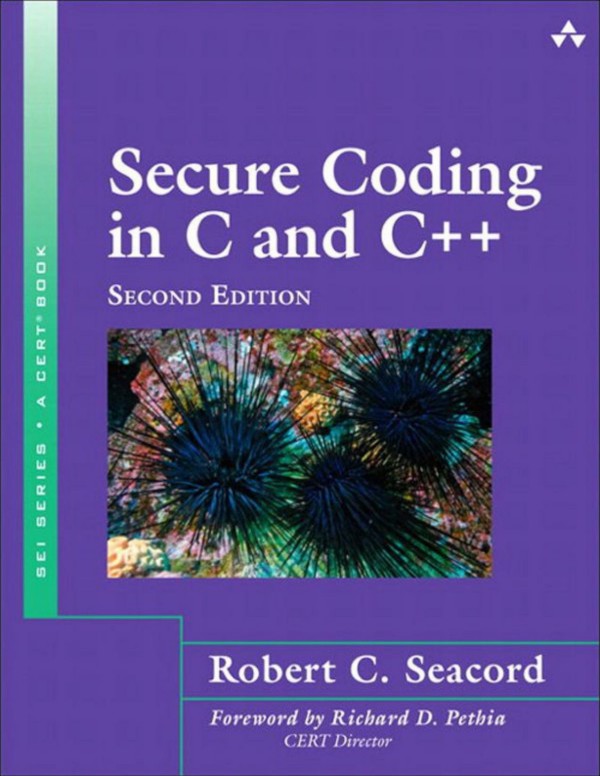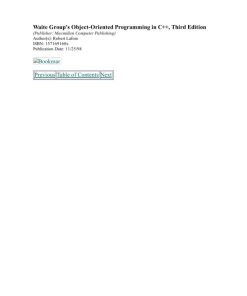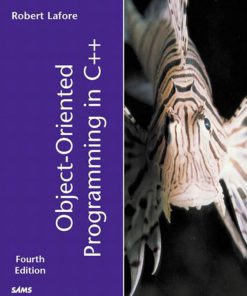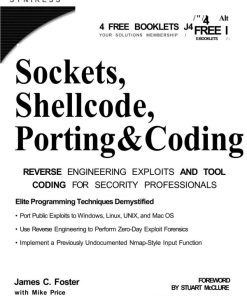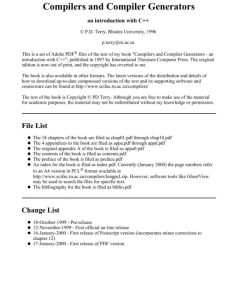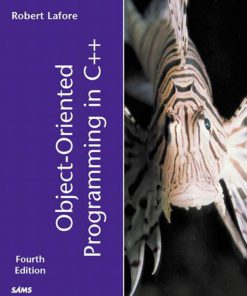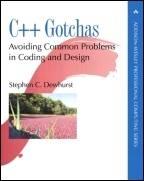Secure Coding in C and C 2nd Edition by Robert Seacord 0321822137 9780321822130
$50.00 Original price was: $50.00.$25.00Current price is: $25.00.
Authors:Seacord, Robert C. , Series:Computer Science [101] , Tags:Computer Science; Cyber Security; Information Technology , Author sort:Seacord, Robert C. , Languages:Languages:eng , Publisher:Addison Wesley , Comments:Comments:Many of the designations used by manufacturers and sellers to distinguish their products are claimed as trademarks. Where those designations appear in this book, and the publisher was aware of a trademark claim, the designations have been printed with initial capital letters or in all capitals.
Secure Coding in C and C 2nd Edition by Robert Seacord – Ebook PDF Instant Download/Delivery. 0321822137, 9780321822130
Full download Secure Coding in C and C 2nd Edition after payment
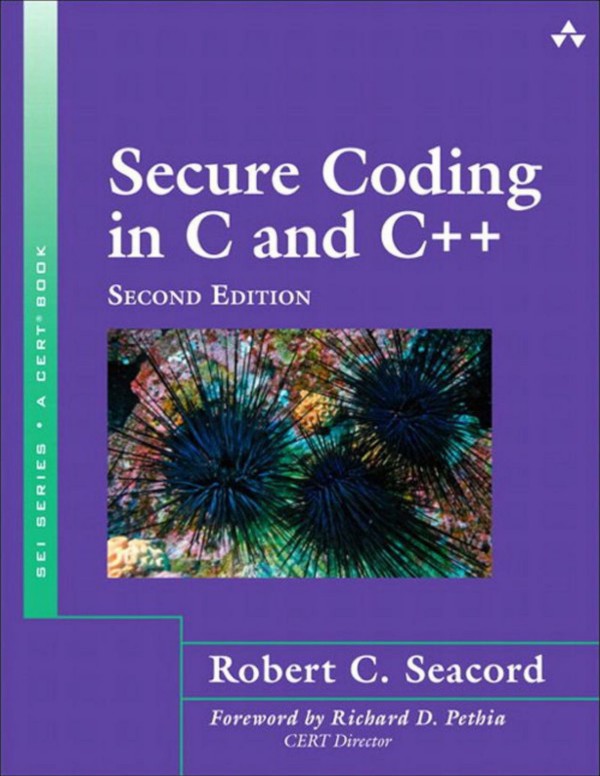
Product details:
ISBN 10: 0321822137
ISBN 13: 9780321822130
Author: Robert C. Seacord
Learn the Root Causes of Software Vulnerabilities and How to Avoid Them Commonly exploited software vulnerabilities are usually caused by avoidable software defects. Having analyzed tens of thousands of vulnerability reports since 1988, CERT has determined that a relatively small number of root causes account for most of the vulnerabilities. Secure Coding in C and C++, Second Edition, identifies and explains these root causes and shows the steps that can be taken to prevent exploitation. Moreover, this book encourages programmers to adopt security best practices and to develop a security mindset that can help protect software from tomorrow’s attacks, not just today’s. Drawing on the CERT’s reports and conclusions, Robert C. Seacord systematically identifies the program errors most likely to lead to security breaches, shows how they can be exploited, reviews the potential consequences, and presents secure alternatives. Coverage includes technical detail on how to Improve the overall security of any C or C++ application Thwart buffer overflows, stack-smashing, and return-oriented programming attacks that exploit insecure string manipulation logic Avoid vulnerabilities and security flaws resulting from the incorrect use of dynamic memory management functions Eliminate integer-related problems resulting from signed integer overflows, unsigned integer wrapping, and truncation errors Perform secure I/O, avoiding file system vulnerabilities Correctly use formatted output functions without introducing format-string vulnerabilities Avoid race conditions and other exploitable vulnerabilities while developing concurrent code The second edition features Updates for C11 and C++11 Significant revisions to chapters on strings, dynamic memory management, and integer security A new chapter on concurrency Access to the online secure coding course offered through Carnegie Mellon’s Open Learning Initiative (OLI) Secure Coding in C and C++, Second Edition, presents hundreds of examples of secure code, insecure code, and exploits, implemented for Windows and Linux. If you’re responsible for creating secure C or C++ software–or for keeping it safe–no other book offers you this much detailed, expert assistance.
Secure Coding in C and C 2nd Table of contents:
Chapter 1. Running with Scissors
1.1. Gauging the Threat
1.2. Security Concepts
1.3. C and C++
1.4. Development Platforms
1.5. Summary
1.6. Further Reading
Chapter 2. Strings
2.1. Character Strings
2.2. Common String Manipulation Errors
2.3. String Vulnerabilities and Exploits
2.4. Mitigation Strategies for Strings
2.5. String-Handling Functions
2.6. Runtime Protection Strategies
2.7. Notable Vulnerabilities
2.8. Summary
2.9. Further Reading
Chapter 3. Pointer Subterfuge
3.1. Data Locations
3.2. Function Pointers
3.3. Object Pointers
3.4. Modifying the Instruction Pointer
3.5. Global Offset Table
3.6. The .dtors Section
3.7. Virtual Pointers
3.8. The atexit() and on_exit() Functions
3.9. The longjmp() Function
3.10. Exception Handling
3.11. Mitigation Strategies
3.12. Summary
3.13. Further Reading
Chapter 4. Dynamic Memory Management
4.1. C Memory Management
4.2. Common C Memory Management Errors
4.3. C++ Dynamic Memory Management
4.4. Common C++ Memory Management Errors
4.5. Memory Managers
4.6. Doug Lea’s Memory Allocator
4.7. Double-Free Vulnerabilities
4.8. Mitigation Strategies
4.9. Notable Vulnerabilities
4.10. Summary
Chapter 5. Integer Security
5.1. Introduction to Integer Security
5.2. Integer Data Types
5.3. Integer Conversions
5.4. Integer Operations
5.5. Integer Vulnerabilities
5.6. Mitigation Strategies
5.7. Summary
Chapter 6. Formatted Output
6.1. Variadic Functions
6.2. Formatted Output Functions
6.3. Exploiting Formatted Output Functions
6.4. Stack Randomization
6.5. Mitigation Strategies
6.6. Notable Vulnerabilities
6.7. Summary
6.8. Further Reading
Chapter 7. Concurrency
7.1. Multithreading
7.2. Parallelism
7.3. Performance Goals
7.4. Common Errors
7.5. Mitigation Strategies
7.6. Mitigation Pitfalls
7.7. Notable Vulnerabilities
7.8. Summary
Chapter 8. File I/O
8.1. File I/O Basics
8.2. File I/O Interfaces
8.3. Access Control
8.4. File Identification
8.5. Race Conditions
8.6. Mitigation Strategies
8.7. Summary
Chapter 9. Recommended Practices
9.1. The Security Development Lifecycle
9.2. Security Training
9.3. Requirements
9.4. Design
9.5. Implementation
9.6. Verification
9.7. Summary
9.8. Further Reading
People also search for Secure Coding in C and C 2nd:
secure coding in c and c ++ 2nd edition
secure coding in c and c ++ 2nd edition pdf
c coding rules
c programming all codes
You may also like…
eBook PDF
Waite Groups Object Oriented Programming in C 3rd Edition By Robert Lafore 157169160X 9781571691606
eBook PDF
Object Oriented Programming in C 4th Edition by Robert Lafore ISBN 9780132714297 0132714299

